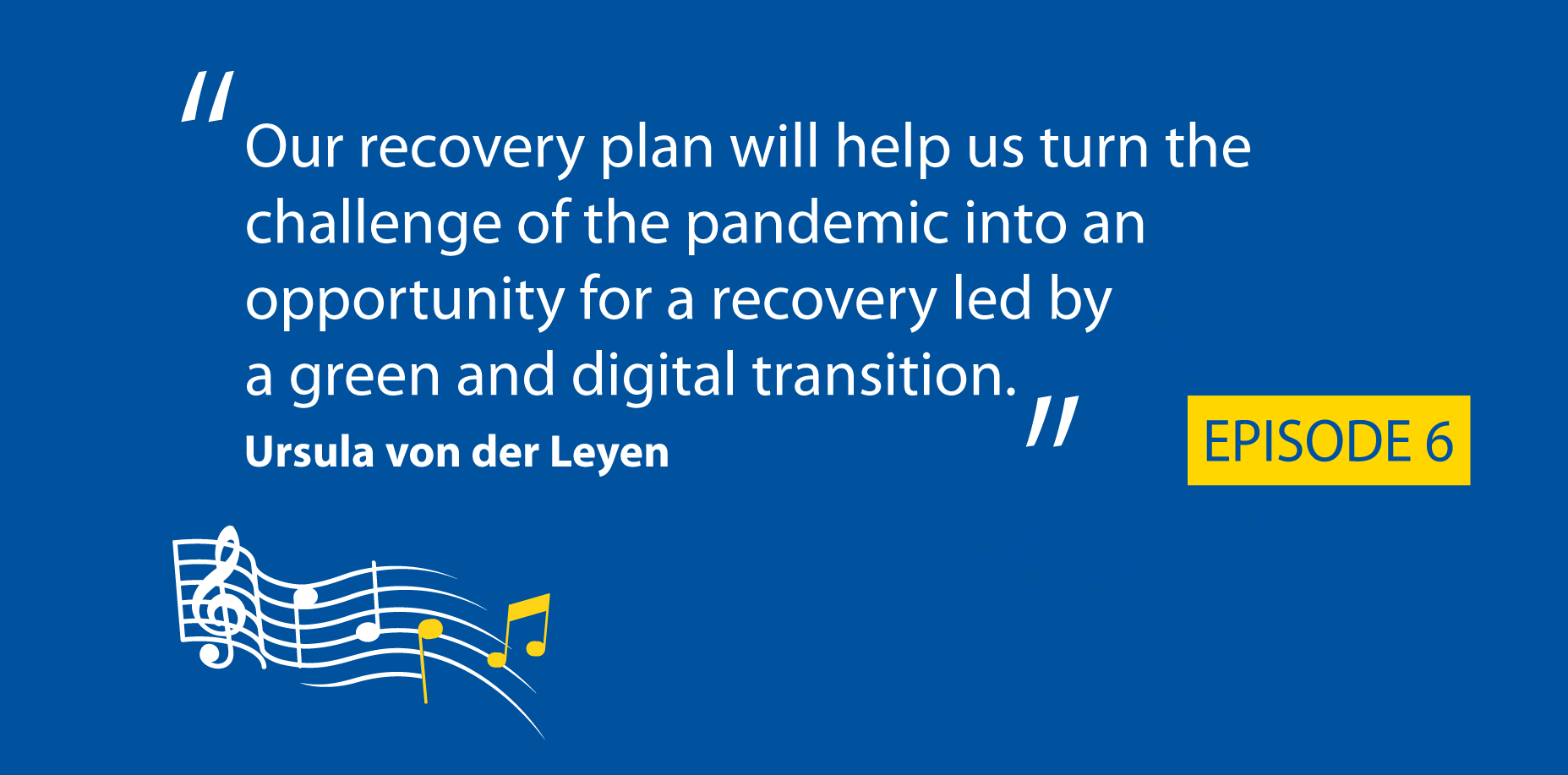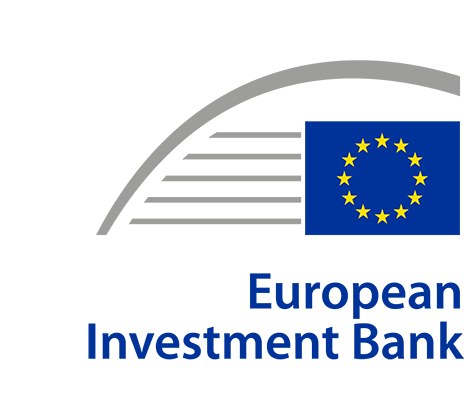Episode 6: Payments, publicity and reporting

A discussion with Oana Dordain, Deputy Head of Unit and Ieva Zālīte, Policy Officer of the European Commission’s DG REGIO (Directorate-General for Regional and Urban Policy), hosted by Anna Zurek from the fi-compass team at EIB.
Welcome to Calling the tune, a new fi-compass podcast series on financial instruments under the new Common Provisions Regulation. This is Anna Zurek, from the fi-compass team at the EIB. “Our recovery plan will help us turn the challenge of the pandemic into an opportunity for a recovery led by a green and digital transition.” The words of the president of the European Commission, Ursula von der Leyen, are a good summary of why we are all in the business of shared management financial instruments. In this final episode of the podcast, I am joined by Oana Dordain, and Ieva Zālīte from DG REGIO to discuss the payment, publicity, reporting and auditing requirements for financial instruments under the new CPR. Oana, Ieva welcome back!
Oana: Thank you, Anna. Hello everybody.
Ieva: We are very happy to be here, Anna.
Ieva, the new CPR sets out the procedure for submitting payment applications in relation to financial instruments. Could you take us through the procedures? What is new?
Ieva: In fact, we changed the rules completely. The purpose of these changed rules is to simplify the payment application process and to align it with the actual implementation on the ground. If we look at the arrangements in the current programming period, instead of a number of tranches that the current rules envisage, for the future, there will be only one advance payment. This means that the managing authority will include, in the first payment application, the amount up to 30% of the programme resources committed in the funding agreement and also paid to the financial instrument. The fund manager will have a certain level of liquidity to start the implementation. Afterwards, for each Euro incurred as eligible expenditure, the Members State will be able to ask from the Commission reimbursement with the next payment application. In addition, for each payment application, the managing authority has to submit an annex to the payment claim, which presents the amount of the advance that was paid into the fund. This amount of the advance would have to be cleared no later than the end of the accounting year. These rules are set out in the article, which speaks about specific elements for financial instruments in payment applications. What I would also like to note is that this article and these rules regulate the payment applications between the Member States and the Commission, and not the arrangements between the managing authority and the fund manager. These arrangements can be different and can be negotiated and agreed in the funding agreement.
Is the procedure different for the case that the managing authority implements a loan or a guarantee financial instrument directly?
Ieva: Yes, indeed. In the situation where the managing authority implements financial instruments themselves, as you said, loans and guarantees, the expenditure can be claimed to the Commission as soon as they are incurred. This is the same situation as we have in the current programming period.
Now, let us turn to publicity requirements related to shared management financial instruments. Oana, I think the new approach is very much policy driven for the European Commission?
Oana: Correct Anna, yes. The publicity requirements are of utmost importance for the European Commission. The importance for the Commission of these requirements can be seen in the last paragraph of this article on responsibilities of beneficiaries, where it is envisaged that the managing authority has to apply measures up to cancelling 3% of the support from the funds to the operation concerned, if these requirements are not respected. As the Commission, we hope that this paragraph will never be used, as we think that all citizens attached to the EU understood how important communication and publicity are to fighting disinformation and manipulation against EU.
In order to ensure EU support is visible to all stakeholders, what are the requirements for financial instruments under the new CPR?
Oana: The requirements for financial instruments under the new CPR are defined in the article on responsibilities of beneficiaries. The paragraphs A and B of this article, apply to the bodies implementing financial instruments, and are also in line with what is required under the current regulation. The novelty stands in paragraph C of this article, as this paragraph C does not apply to the bodies implementing financial instruments, but those bodies should ensure that the final recipients fulfilling the conditions of this article respect these obligations. It means that an SME, which uses a loan supported by ERDF for an investment, which exceeds EUR 500.000, has to put a durable plaque or billboard clearly visible to the public, presenting the emblem of the Union close to those investments, when there is physical implementation. Paragraph D also applies to the bodies implementing financial instruments. It is the same for paragraph E, when the financial instrument operation is above EUR 10 million.
This is indeed a great way to enhance visibility to the public, that EU resources are being used for projects. Let’s move on to the reporting. Ieva, what are the new rules on reporting?
Ieva: Information about the progress of the implementation of financial instruments is important, not only to the managing authority, but also to the Commission. Therefore, reporting and monitoring are important aspects of implementation. The data that the managing authority reports to the Commission, gives us a lot of information about how the money is spent, how fast it is spent, and in which policy objectives, to make this reporting process easier from the point of view of the managing authority. For the future regulation we wanted to simplify these reporting requirements which are defined in the article speaking about the transmission of data to the Commission and the article envisages a joint transmission of data, both for grants and financial instruments. So, the purpose of this article is more frequent and more accurate data. It also sets a more streamlined collection of data for all forms of support, including on financial instruments. In practice, it means that we ask the managing authority to report more frequently, but we ask for less data in terms of quantity. We no longer ask to report the same data in different reporting modules, and from this point of view we expect that this exercise will result in a more accurate and more reliable data, when we aggregate them to present how our policies are performing.
In terms of deadlines, as I mentioned, we asked for this information to be transmitted more frequently. The information, for both grants and financial instruments, had to be submitted five times per year, so we tried to ensure and to get closer to this reporting of real time data. Then, the managing authorities have to report on the indicators. This has to be reported twice a year. Then, for the financial instruments, because there are certain characteristics, which are only valid for financial instruments, we ask for a few specific data requirements. Here, we would like to receive information about how much was invested by different types of products; how much was paid for management costs and fees. We would also like to know how much other public or private resources have been attracted by our funds. We would also like to know if there are any resources returned that the investments have generated. Overall, we think that this new approach to reporting will help with data quality, but will also require less work from the managing authority.
If I understand correctly, more frequent reports, but less data and better data quality. And, regarding auditing of financial instruments, what are the new rules and where in the new CPR can our listeners find them?
Oana: The audit was simplified for financial instruments in the new programming period. This comes first from the overall simplification of audit, also for grants, as the management verifications of audits will be risk-based for the future. In addition, there is a specific article on audits of financial instruments and there you can find even more simplifications. It is clearly written that there cannot be any on-the-spot management verifications at the level of the final recipients, as it is the case in this programming period. There is also a very important simplification related to the reliance on the controls, which are already done by external bodies. This reliance can be for the managing authorities in the scope of the management verifications, as well as for the audit authorities.
Finally, we have already covered many topics related to the new CPR in this podcast series, but there might be a few novelties that have not yet been featured. Oana, Ieva, are there any other provisions that you would like to highlight to our listeners?
Oana: Yes, Anna. I would just like to say, very shortly, to our listeners that the provisions regarding the reuse of resources did not change for the future. So, during the eligibility period, these resources paid back can be used for the same purpose as the initial resources: investments, management costs and fees, and in addition, to cover the negative interest. After the end of the eligibility period, we have the same rules that during eight years after the end. These resources should be used in accordance to the policy objectives of the programmes under which they were set up, in the form of financial instruments or grants.
Ieva: Another provision that I would like to highlight, is the one about differentiated treatment on investors. Our listeners will be familiar with the concept, so I would just like to reiterate that, what is important in relation to this article is to remember that the level of differentiated treatment should not exceed what is necessary to create the incentives for attracting private resources. We should not provide incentives where private investors would participate anyway, or where the risk of the project is quite low, because of the participation of the public resources. This level of incentive will be determined either in the process of selecting the fund managers, in a competitive process, or through an independent assessment, and never through an assessment provided by the body, which benefits from this differentiated treatment.
In case you, our listeners, want to find out more on the new CPR, we encourage you to also watch the video presentation by Oana and Ieva, which was recorded at our online conference “Regional policy financial instruments ready to meet the EU challenges”, in December 2020. This presentation and slides are available in the past events section on our fi-compass website. Oana, in case of any further regulatory questions related to financial instruments under the new CPR, should the listeners contact their geographic units at DG REGIO?
Oana: Yes, Anna, we encourage our listeners to contact their national contact points and their questions will arrive to us, and we will do our best to reply as soon as possible.





